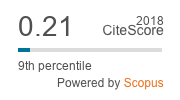Desenvolvimento e Validação de Escala de Reflexão na Aprendizagem
Mots-clés :
Aprendizagem, Reflexão, Escala, Validade interna e externaRésumé
Uma escala de reflexão na aprendizagem (ERA) constituída de dez itens foi construída a partir de diferentes fontes de informação. A caracterização das propriedades dessa escala foi realizada com estudantes de medicina de ambos os
sexos e envolveu medidas de consistência interna, replicabilidade e análise de fatores, bem como verificação de validade de
critério e de construto. Os resultados mostraram que a ERA tem nível satisfatório de consistência interna (alfa = 0,81) e
estabilidade temporal moderada (correlação teste-reteste = 0,71 no intervalo de três meses). Estudos de correlação mostraram
associações significantes da ERA com uma escala análoga, com um índice de rendimento acadêmico e com três medidas
pertinentes à capacidade de monitoração da aprendizagem. Em suma, os achados do estudo proporcionam embasamento para
a confiabilidade e validade da escala e apoiam seu uso em pesquisa educacional sobre reflexão na aprendizagem.
Téléchargements
Références
Rogers, W.L. (1981). A guide for selecting statistical techniques
for analyzing social science data. Ann Arbor: ISR, University
of Michigan.
Bandura, A. (1993). Perceived self-efficacy in cognitive development
and functioning, Educational Psychologist 28, 117-148.
Bandura, A. (1997). Self-efficacy. The exercise of control. San Francisco:
W.H. Freeman.
Boud, D., Keogh, R. & Walker, D. (1988a). Reflection: Turning
experience into learning. London: Kogan Page.
Boud, D., Keogh, R. & Walker, D. (1988b). Promoting reflection
in learning: A model. Em D. Boud, R. Keogh & D. Walker
(Orgs.), Reflection: Turning experience into learning (pp. 18-
40). London: Kogan Page.
Coles, C. (1991). Is problem-based learning the only way? Em D.
Boud & G. Feletti (Orgs.), The challenge of problem based
learning (pp. 295-307). London: Kogan Page.
Entwistle, N.J. (1981). Styles of learning and teaching. Chichester:
Wiley.
Gibbs, G. (1992). Improving the quality of student learning. Bristol:
Technical and Educational Services.
Gordon, M.J. (1991). A review of the validity and accuracy of selfassessments
in health professions training. Academic Medicine,
66, 762-769.
Hammond, M. & Collins, R. (1991). Self-directed learning inpractice.
London: Kogan Page.
Kolb, D. (1984). Experiential learning. Englewoods Cliffs: Prentice-
Hall.
Mitchell, R. (1994). The development of the cognitive behavior
survey to assess medical student learning. Teaching and Learning
in Medicine, 6, 161-167.
Norman, G.R. & Streiner, D.L. (1994). Biostatistics. St. Louis:
Mosby.
Richardson, J.T.E. (1995). Using questionnaires to evaluate student
learning. Em G. Gibbs (Org.), Improving student learning
through assessment and evaluation. Oxford: Oxford Centre for
Staff Development.
Rowntree, D. (1993). Teach yourself with open learning. London:
Kogan Page.
Rust, J. & Golombok, S. (1989). Modern psychometrics. The science
of psychological assessment. London: Routledge.
Sobral, D.T. (1997). Improving learning skills: A self-help group
approach. Higher Education, 33, 39-50.
Streiner, D.L. & Norman, G.R. (1995). Health measurement scales.
Oxford: Oxford University Press.
Zimmerman, B.J. & Martinez-Pons, M. (1988). Construct validation
of a strategy model of student self-regulated learning. Journal
of Educational Psychology, 80, 284-290.
Zimmerman, B.J., Bandura, A. & Martinez-Pons, M. (1992). Selfmotivation
for academic attainment: The role of self-efficacy
beliefs and personal goal setting. American Educational Research
Journal, 29, 663-676.



